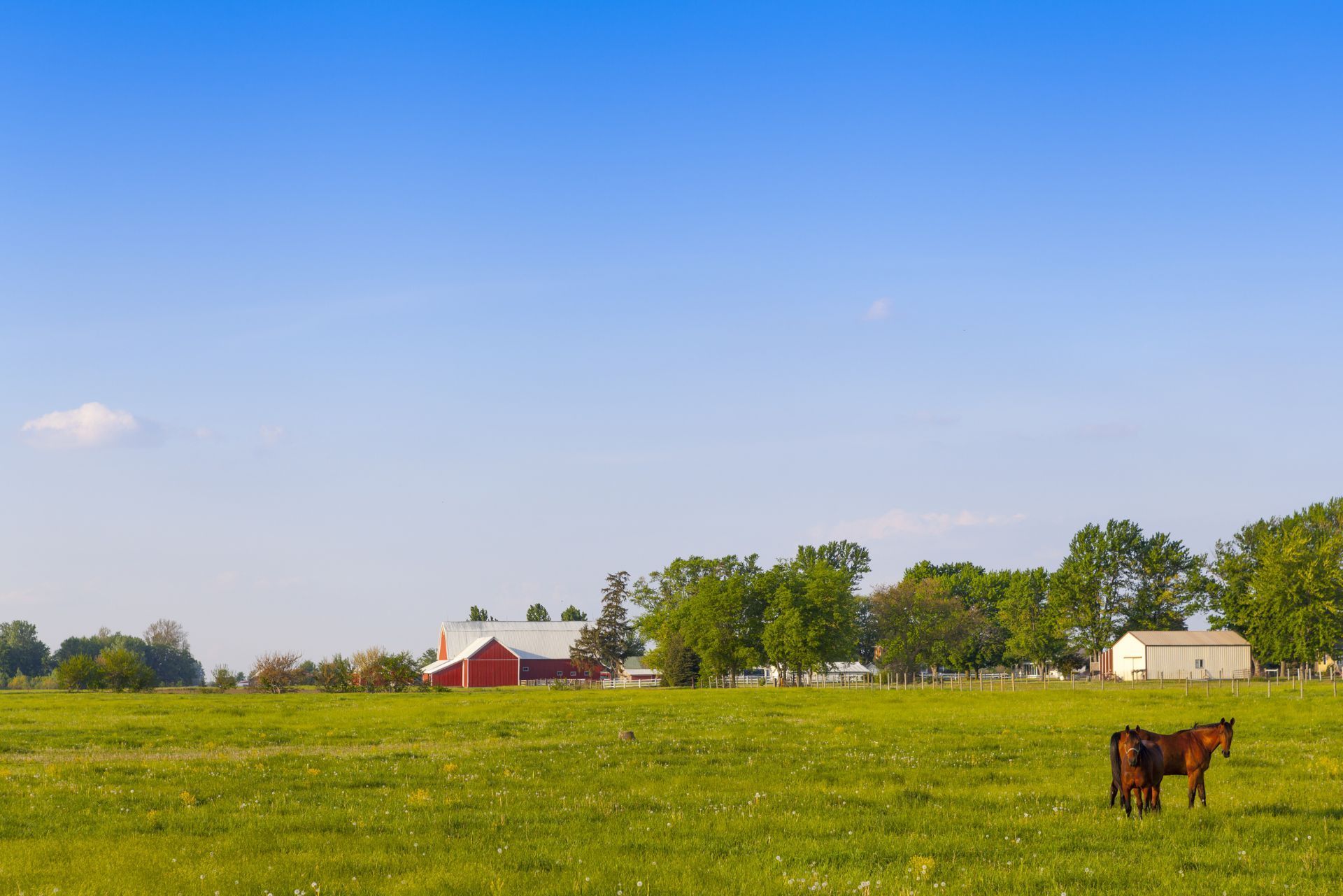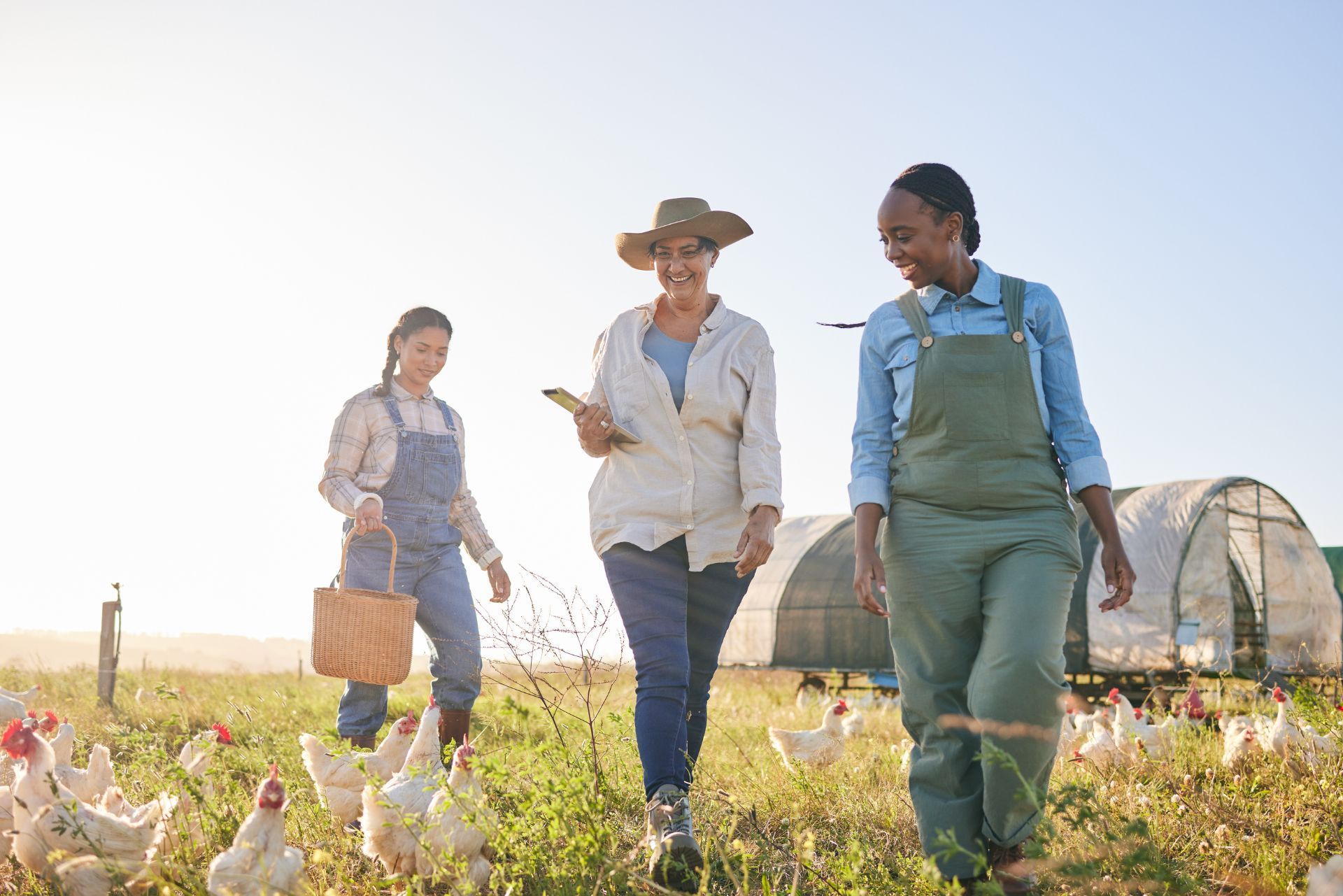Top 3 Recommended Policies

Farming and ranching in New York come with unique challenges that demand tailored insurance coverage. From unpredictable weather to the rise of precision agriculture technologies, protecting your assets requires a clear understanding of the evolving insurance landscape. This guide breaks down what farm and ranch insurance means for New York producers, highlighting key trends, risks, and coverage options to help you make informed decisions.
As the farm and ranch insurance market grows globally—valued at USD 16.17 billion in 2023 and expected to reach USD 24.02 billion by 2031—New York farmers face both opportunities and challenges in securing the right protection. Learn more about the market’s expansion and what it means for your farm’s future here.
Understanding Farm and Ranch Insurance in New York
Farm and ranch insurance covers a broad spectrum of risks that agricultural operations face. This includes protection for property, equipment, livestock, crops, liability, and even emerging risks like cyber threats. In New York, where farms range from dairy operations to fruit orchards and vineyards, insurance policies must be flexible to address diverse needs. The agricultural landscape in New York is not only rich in variety but also in tradition, with many farms having been passed down through generations. This legacy adds another layer of complexity to insurance needs, as these operations often blend historical practices with innovative techniques to improve productivity and sustainability.
Traditional coverage often includes protection against fire, theft, and weather-related damages. However, with climate change intensifying weather patterns, the risk landscape is shifting. For example, studies predict that climate change will double the annual probability of maize yield protection insurance claims in the U.S. Corn Belt by mid-century—an indicator of how crop insurance claims may increase in other regions as well, including New York’s corn producers according to recent research. This trend underscores the importance of adaptive risk management strategies that not only focus on current threats but also anticipate future challenges posed by environmental changes. Farmers are increasingly encouraged to engage in proactive measures, such as diversifying crops and investing in resilient farming practices, to mitigate potential losses.
Why Specialized Coverage Matters
Farm and ranch operations are asset-heavy and exposed to multiple hazards. Insurers use a variety of risk assessment models to price policies accurately. This approach is critical in New York, where farms often combine traditional practices with modern technology. Insurers are increasingly adopting artificial intelligence to improve underwriting and pricing for farm accounts, ensuring policies reflect actual risk profiles as noted by industry experts. The integration of technology not only enhances the precision of risk assessments but also allows for more personalized insurance solutions, catering to the unique situations of individual farms. For instance, a vineyard may require different coverage compared to a dairy farm, highlighting the necessity for tailored policies that address specific operational needs.
Moreover, New York’s agricultural producers benefit from coverage that addresses not only physical risks but also liability exposures from farm operations and employee injuries. This comprehensive protection helps farms stay resilient amid changing regulations and market conditions. With the rise of agritourism, many farms are also opening their doors to the public, which introduces new liability considerations. Insurance policies that encompass public liability coverage are becoming increasingly essential for these operations, ensuring that farmers can safely welcome visitors while protecting their assets. Additionally, as farms adopt more sustainable practices, such as organic farming or renewable energy initiatives, specialized insurance products are emerging to support these evolving business models, reflecting the dynamic nature of the agricultural sector in New York.

Emerging Risks and Coverage Innovations
Technology is transforming farming, and insurance is adapting alongside. Precision agriculture tools, such as GPS-guided equipment and sensors, improve efficiency but also introduce new vulnerabilities. Recognizing this, insurers have expanded offerings to cover these technologies and related cyber risks. For instance, in 2023, Chubb Limited enhanced its farm and ranch insurance products to include coverage for precision agriculture and cyber threats, reflecting a broader industry trend toward innovation according to Datahorizon Research.
Cybersecurity has become a critical concern as farms increasingly rely on digital systems for operations and data management. A cyberattack could disrupt supply chains or compromise sensitive information, making cyber coverage an essential part of modern farm insurance. As farms adopt Internet of Things (IoT) devices, the potential attack surface grows, necessitating robust cybersecurity measures. Insurers are now not only providing coverage but also offering risk assessments and cyber hygiene training to help farmers mitigate these emerging threats.
Climate Change and Its Impact on Insurance
New York farmers are not immune to the effects of climate change. More frequent storms, droughts, and temperature fluctuations increase the likelihood of crop losses and property damage. This evolving risk profile is prompting insurers to refine their models and pricing strategies. National attention to climate-related insurance challenges is growing, with legislative bodies investigating rising premiums and disaster impacts, such as the recent inquiry by New York state senators into property insurance market trends reported by Times Union.
For farmers, this means staying informed about how climate trends affect coverage options and costs. Crop insurance programs may become more critical as yield volatility increases, and risk management strategies should incorporate climate resilience. Additionally, insurers are beginning to offer incentives for sustainable practices, such as cover cropping and water conservation techniques, which not only help mitigate climate risks but can also lead to lower premiums. As the landscape of farming continues to evolve, the integration of environmental stewardship into insurance offerings represents a significant shift toward a more sustainable agricultural future.
Key Coverage Types for New York Farms and Ranches
Understanding the main types of insurance available helps farmers select policies that fit their operation’s size, location, and specialty. Here are some essential coverages to consider:
Property and Equipment Insurance
This protects buildings, machinery, and equipment against damage or loss from fire, storms, theft, and accidents. Given New York’s variable weather, including heavy snowfall in some regions, robust property coverage is vital. Additionally, farmers should consider the age and condition of their equipment, as older machinery may require more frequent repairs or replacement. Investing in comprehensive property insurance not only safeguards physical assets but also ensures that operations can resume quickly after a loss, minimizing downtime and financial strain.
Crop Insurance
Crop insurance safeguards against losses from natural disasters and market fluctuations. With national cranberry production recently increasing by 2%, leading to oversupply and price drops, crop insurance can help stabilize income during volatile market conditions according to Farm Credit East. Furthermore, New York farmers can also explore multi-peril crop insurance, which covers a range of risks from drought to pest infestations, ensuring that they are protected against a variety of threats that could impact their harvests. This type of insurance not only provides peace of mind but also encourages farmers to invest in innovative practices and technologies that can enhance crop yields.
Livestock Insurance
Livestock coverage protects animals from disease, accidents, or theft. This is especially important for dairy farmers and ranchers who depend on healthy herds for their livelihoods. In addition to standard livestock insurance, farmers may also consider specialized policies that cover specific breeds or types of livestock, which can be particularly beneficial for those engaged in niche markets. The rising concern over zoonotic diseases further emphasizes the need for comprehensive coverage, as outbreaks can have devastating effects on livestock populations and, consequently, on farmers' income.
Liability Insurance
Liability coverage shields farms from legal claims related to property damage or bodily injury caused by farm operations. This can include coverage for visitors, employees, and third parties. Given the increasing number of agritourism ventures in New York, liability insurance has become even more critical. Farms hosting events, tours, or educational programs must ensure they are protected against potential accidents or injuries that could occur on their premises. Additionally, liability insurance can cover legal fees and settlements, which can be financially burdensome without adequate protection.
Cyber Insurance
As farms adopt digital tools,
cyber insurance becomes a necessary safeguard against data breaches, ransomware, and other cyber threats. With the growing reliance on technology for everything from crop management to financial transactions, the risk of cyberattacks is a pressing concern. Farmers should assess their digital infrastructure and consider policies that not only cover financial losses but also provide resources for incident response and recovery. Investing in cyber insurance can help ensure that farms remain resilient in the face of evolving technological challenges, allowing them to focus on their agricultural operations without the looming threat of cyber vulnerabilities.
How to Choose the Right Insurance for Your New York Farm
Selecting the right insurance involves assessing your farm’s unique risks and working with knowledgeable agents who understand local agricultural conditions. Consider factors such as crop types, livestock, equipment value, and exposure to weather extremes. For instance, New York's diverse climate can lead to varying risks, from heavy snowfall in the winter to potential droughts in the summer, making it essential to evaluate how these factors specifically impact your operations.
Insurers increasingly rely on data-driven models to price policies, so providing accurate information about your operation helps ensure fair premiums. Staying current on technological and regulatory changes also supports better coverage decisions. For example, advancements in precision agriculture and the use of drones for monitoring crops can not only enhance productivity but also influence insurance assessments. Keeping abreast of such innovations can provide you with a competitive edge while ensuring that your coverage reflects the true value of your assets.
Consulting with insurance professionals who specialize in farm and ranch policies can uncover coverage gaps and recommend tailored solutions. This approach helps protect your investment while managing costs effectively. Additionally, it is beneficial to explore various types of coverage, such as crop insurance, liability insurance, and equipment breakdown insurance, which can all play crucial roles in safeguarding different aspects of your farming operation. Engaging in discussions about risk management strategies with your insurance agent can further enhance your understanding of potential vulnerabilities and the best ways to mitigate them.
Moreover, consider joining local agricultural associations or cooperatives, which often provide resources and insights into the insurance landscape specific to New York farms. These organizations can offer valuable networking opportunities with other farmers who have navigated similar challenges, sharing their experiences and recommendations on effective insurance solutions. By leveraging these community resources, you can make more informed decisions that align with both your operational needs and financial goals.
Farm and Ranch Insurance Market Trends Affecting New York
The farm and ranch insurance market is evolving rapidly. Technological advancements, climate change, and shifting agricultural practices are driving growth and innovation. The global market’s projected compound annual growth rate of 5.15% through 2031 reflects these dynamics according to Kings Research.
New York farmers benefit from this growth as insurers develop more sophisticated products that address modern risks. The integration of AI in underwriting and pricing enhances accuracy and responsiveness to changing conditions. Experts note that insurers are turning to multiple models to assess risk in this asset-heavy industry, improving policy customization according to industry analysis.
Market Challenges and Opportunities
While innovation brings better coverage options, rising premiums and climate-related claims pose challenges. Legislative scrutiny, such as the investigation into New York’s property insurance market, signals ongoing efforts to balance affordability and risk management.
Farmers can seize opportunities by adopting risk mitigation practices, investing in resilient infrastructure, and leveraging insurance products that cover emerging threats like cyber risks and precision agriculture technologies.

Coverage Comparison: Basic vs. Advanced Farm Insurance
| Coverage Type | Basic Coverage | Advanced Coverage |
|---|---|---|
| Property Insurance | Buildings, equipment, fire, theft | Includes natural disasters, equipment breakdown, and precision agriculture tools |
| Crop Insurance | Protection against weather-related losses | Yield protection, revenue insurance, and market price fluctuations |
| Livestock Insurance | Basic mortality and theft coverage | Comprehensive disease, accident, and loss of use coverage |
| Liability Insurance | General liability for bodily injury and property damage | Product liability, employee-related claims, and environmental liability |
| Cyber Insurance | Not typically included | Coverage for data breaches, ransomware, and cyber extortion |
Frequently Asked Questions
Q: Is farm insurance mandatory in New York?
A: Farm insurance is not legally required but highly recommended to protect your assets and operations from various risks.
Q: Can I insure my farm equipment separately?
Yes. Equipment can be insured under property insurance or through specialized policies depending on value and usage.
Q: How does climate change affect my farm insurance premiums?
Increasing weather-related risks may lead to higher premiums or changes in coverage terms to reflect greater potential losses.
Q: What is precision agriculture insurance?
This coverage protects technology like GPS systems and sensors used to optimize farming operations, including risks from cyberattacks.
Q: How can I lower my farm insurance costs?
Implementing risk management practices, maintaining accurate records, and bundling policies can help reduce premiums.
Q: Does farm insurance cover liability for farm employees?
Liability insurance typically covers third-party claims, but workers’ compensation is needed for employee injuries.
Before You Go: Protecting Your New York Farm’s Future
Farm and ranch insurance in New York is more than a safety net—it is a strategic tool for managing risk and sustaining your agricultural business. With the market evolving alongside technology and climate challenges, staying informed and proactive is essential.
Explore your options, work with knowledgeable agents, and consider advanced coverages that reflect your farm’s unique needs. Doing so will help you safeguard your livelihood against the uncertainties ahead.
For more insights on farm insurance trends and innovations, visit
Datahorizon Research and stay updated on the latest developments.
Contact Us
Phone
Location

